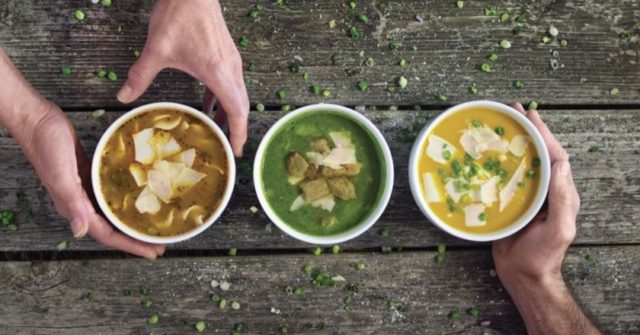A Cincinnati chef named Suzy DeYoung was once a caterer who had first hand experience with how vendors, restaurants, and even grocery stores pick-and-choose the prettiest produce to make meals. The amount of food waste Americans create is staggering, and as a chef DeYoung knew that an ugly vegetable could make as good a meal as the most pristine and spotless one. That’s just not what her high-end customers wanted. DeYoung told Fast Company that she had to pass by a lot of good food to make a pretty plate.
“That always kind of haunted me and I hated that,” she explained.
In her hometown of Cincinnati, the waste seemed particularly egregious. Cincinnati’s childhood poverty rate is nearly double the national average. Knowing this statistic and the amount of food being regularly thrown out, DeYoung decided to do something about it and started a nonprofit called La Soupe. La Soupe collects leftover produce from grocery stores and farmer’s markets, then turns them into soup that can be frozen and distributed to hungry families.
In 2016, La Soupe collected 125,000 pounds of produce, which prevented it from taking up space in a landfill. They distributed 800 quarts a week with the help of 47 agencies around city who participate in La Soupe’s programming during the school year, but estimate on their website that they’ve given out 95,000 servings overall.
It takes 200 volunteers to collect all their ingredients, in a similar system to what’s popular with food banks. They use an app that makes it easy for the company’s donating, like Kroger, Jungle Jims, Crosset, and Sugar Creek, to tell La Soupe what they have to be picked up. Then the volunteers sort what needs to be used first, so it doesn’t spoil, and if anything is truly inedible it gets fed to local farm animals.
But why soup? Well, it’s delicious, obviously, but it also an extremely cost effective meal.
“You can stretch it, meaning if all you have are potatoes and onions you can make a lot by adding water versus just giving somebody a potato,” explained DeYoung.
It’s also easy for families to heat up to eat, who may be too busy or not have the skills to cook a more complicated meal. But they do have a program for families that want to learn. Cincinnati Gives A Crock is a class they offer that teaches students in schools and community centers how to use a crockpot, and how to make a soup of their own. The great thing about soup is that almost anyone can learn to make something hearty and healthy—and you’ll never know if the carrot was shaped super weird before it went in the blender.







